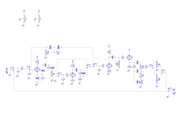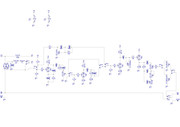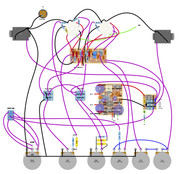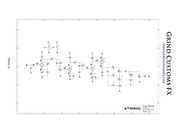All he says is correct, except he forgets two things:sonolink said:"To find a suitable value for the grid-stopper, simply apply the formula for an RC filter. To get a cut-off frequency of 20kHz we need a grid stopper of: Rg = 1 / (2 pi f C) = 1 / (2 pi × 20000 × 200 × 10^-12) = 39789 ohms
Fender commonly used two jack sockets each connected to 68k grid stoppers which appeard in parallel when using only the 'hi' input, making 34k. Close enough.
However, the input grid stopper adds the most amount of Johnson noise (hiss) of any resistor in the amp. (A 68k stopper generates at least four times more hiss than a typical 12AX7!) Can we use a smaller resistor to reduce noise, but still keep the bandwidth the same? Yes, it's easy. We simply add a little extra capacitance to make up for the lower resistance. I recommend a 10k resistor, which will make the amp much less hissy, together with an extra 100pF to 470pF capacitor from grid to ground."
- this capacitor loads the input, so the guitar sees too much capacitance, and each subsequent stage sees too much capacitance, which results in restricted bandwidth.
- the grid sees the grid-stopper resistor in series with the output impedance of the preceding stage or the source impedance of the guitar; the main noise contributor is not the grid-stopper, it's the impedance of the preceding stage or the source.
However, in terms of frequency response, the 470pF grid cap is not negligible, creating an HF cut-off at 2.8kHz in the worst case. Cascading this effect in the 4 stages ends up with a cut-off frequency of about 1.7kHz.
Correct.So the if the cap is placed before or after the Presence circuit doens't make a difference except for blocking DC when it's before?
If there is no DC coming from the ouside world, it is not necessary. It may somehow affect the LF response, if driving a low-ish impedance. Don't need is exactly what I mean, whether it's here or not won't change a thing in practice. You know, I could probably add 50 components to your schemo that would not affect tone in any way 8). That's what some so-called gurus do, claiming all sorts of unmeasurable benefits.C11. Wouldn't my modded circuit benefit from that? Or it doesn't really matter or affects tone? Or in other words I'd like to understand why you told me I don't need it
I agree, you could dispense with them.BTW, just wondering: aren't R5 and R6 "repeating" R1 and R2 somehow?
One thing I had not noticed; the input is permanently loaded with the 250k Clean pot. I would probably up it to 500k or even 1Meg. Indeed, C23 & 24 may need to be adjusted accordingly. This is something you'll need to do when tuning the circuit.







